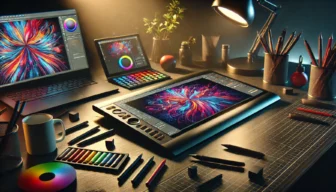The Future is Now: 3D Printing Trends Shaping 2024 and Beyond
Remember that futuristic tech you only saw in sci-fi movies? Newsflash: It’s here, and it’s printing everything from medical implants to houses. That’s right, I’m talking about 3D printing, and 2024 is shaping up to be a pivotal year for this game-changing technology.
We at STS Additive Manufacturing aren’t just watching this revolution unfold – we’re at the forefront, helping businesses like yours harness the incredible power of 3D printing. So, buckle up as we dive into the trends defining the future of 3D printing and how you can be a part of it.
The 3D Printing Boom Why Everyone’s Talking About It
Remember when 3D printing was just a niche technology for creating prototypes? Those days are long gone. In 2023 alone, the global 3D printing market exploded to a whopping $22.14 billion, blowing past all previous predictions. And it’s not slowing down anytime soon. Experts forecast a market size of $24.8 billion in 2024, putting us on track to hit a staggering $57.1 billion by 2028!
But what’s fueling this meteoric rise? Simply put, 3D printing is no longer just about experimental designs. It’s about real-world production.
Think about it: 70% of businesses using 3D printing are churning out more parts than ever before, with many producing thousands of units. This shift from prototyping to full-scale production is transforming industries from aerospace to healthcare, and it’s only the beginning.

Trends Reshaping the 3D Printing Landscape
So, what exciting developments are propelling 3D printing into the spotlight? Let’s take a look at the trends shaping the future of this revolutionary technology:
Sustainable Manufacturing Printing a Greener Future
As the world embraces sustainability, so does 3D printing. This technology is inherently more resource-efficient than traditional manufacturing, minimizing waste and reducing its environmental footprint.
But the real game-changer is the rise of eco-friendly materials. We’re talking about biodegradable polymers, recycled plastics, and even bio-based alternatives that are just as strong and durable as traditional materials. This shift towards sustainable practices makes 3D printing a champion of responsible manufacturing and a key player in creating a greener future. Companies like Protolabs are leading the charge, offering a wide range of sustainable materials and processes.
Advanced Materials Pushing the Boundaries of Innovation
Remember those seemingly impossible designs you once dreamt of? 3D printing is making them a reality, thanks to the development of advanced materials with never-before-seen properties.
We’re talking about super-strong composites, flexible and lightweight materials perfect for intricate designs, and even biocompatible materials revolutionizing the medical field. These breakthroughs are unlocking a world of possibilities, enabling the creation of products and solutions we could only have imagined a few years ago. Xometry, for example, offers a vast library of materials, including advanced options like Ultem and PEEK.

Customization & Personalization Tailoring Products to Perfection
Imagine a world where every product is tailored to your exact needs and preferences. That’s the power of 3D printing. This technology excels at creating customized products, from perfectly fitting medical devices to personalized consumer goods.
This trend is disrupting traditional mass production, giving consumers more control than ever before. Need a unique phone case with your initials? No problem. Want a prosthetic limb designed specifically for your body? 3D printing makes it possible. Companies like Toybox are making customization fun and accessible for consumers, while others focus on specialized applications in healthcare and beyond.
AI & Machine Learning Smarter Printing for a Smarter Future
The convergence of 3D printing with Artificial Intelligence (AI) and Machine Learning (ML) is where things get really exciting. AI-powered algorithms are optimizing designs, predicting potential flaws, and even controlling the printing process in real-time. This not only enhances the speed and precision of 3D printing but also paves the way for automated, self-correcting manufacturing systems.
Imagine a future where 3D printers learn from each print, constantly improving efficiency and accuracy. That’s the power of AI and ML in the world of additive manufacturing. Forward-thinking companies are already integrating AI and ML into their 3D printing workflows. For instance, some high-end 3D printers, such as those from Flashforge, incorporate AI-powered features for improved print quality and reliability.
Global Expansion 3D Printing Across Borders
3D printing isn’t just a trend in developed nations; it’s rapidly expanding into emerging markets, driving innovation and economic growth across the globe. This global adoption is creating a more interconnected and dynamic manufacturing landscape, opening up new opportunities for collaboration and knowledge sharing.
As 3D printing becomes more accessible and affordable worldwide, we can expect to see a surge in creativity and innovation, further fueling the growth of this transformative technology. The increasing availability of affordable desktop 3D printers, like those from Ender, is playing a key role in democratizing 3D printing and making it accessible to a global audience.
The Future is Printable Are You Ready
The 3D printing revolution is here, and it’s changing the way we design, manufacture, and interact with the world around us. From sustainable practices to personalized products and AI-powered systems, the possibilities are limitless.





